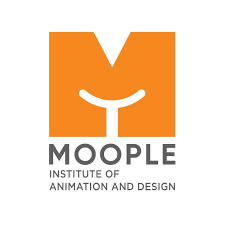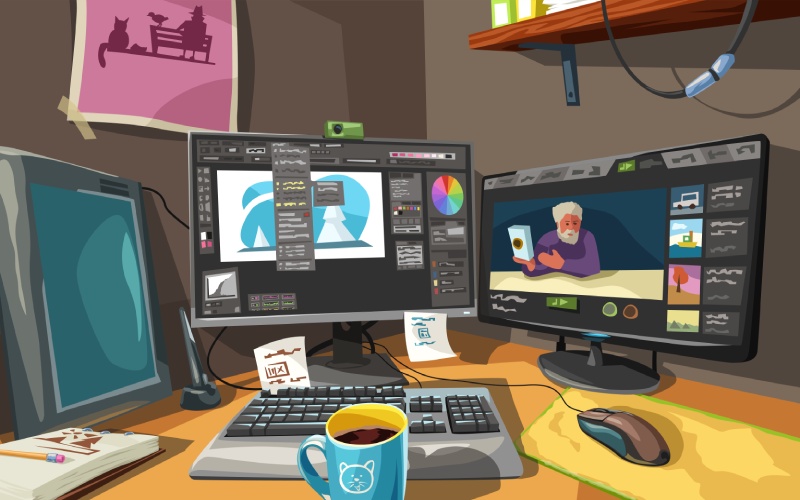Table of Contents
In the dynamic world of animation, software tools play a crucial role in bringing imagination to life. From creating captivating characters to building immersive worlds, animators rely on specialized software to craft their art. If you’re aspiring to become an animator, understanding the various software options available is essential. In this blog post, we will explore some of the essential animation software used by professionals in the industry, empowering you to make informed choices and embark on your creative journey.
Adobe Creative Cloud Suite:
Adobe Creative Cloud is a comprehensive suite of software widely used in the animation industry. Key applications include:
- Adobe Photoshop: Primarily known as an image editing software, Photoshop offers powerful features for creating character designs, storyboards, and digital backgrounds.
- Adobe Illustrator: A vector-based software, Illustrator is popular for creating clean and scalable artwork, ideal for creating character illustrations and graphic elements.
- Adobe After Effects: This software is widely used for creating motion graphics, visual effects, and compositing. It allows animators to bring their creations to life with smooth movements and captivating effects.
Autodesk Maya:
Maya is a versatile and industry-standard 3D animation software used for modeling, rigging, texturing, and animating. It offers a robust set of tools and features for creating realistic characters, environments, and visual effects. Maya is widely employed in film, television, and game production. All the best animation courses teach these.
Maxon Cinema 4D:
Cinema 4D is another popular 3D animation software known for its user-friendly interface and powerful capabilities. It offers a wide range of tools for modeling, texturing, lighting, and animation. Cinema 4D finds extensive use in motion graphics, architectural visualization, and character animation.
Blender:
Blender is a free and open-source 3D animation software known for its robust features and active community. It provides a wide range of tools for modeling, texturing, rigging, and animation. Blender is utilized in various animation industries, including film, television, game development, and visual effects.
Adobe Animate:
Formerly known as Adobe Flash, Adobe Animate is widely used for 2D animation, interactive web content, and game development. It allows animators to create vector-based animations and provides tools for timeline-based animation, interactivity, and publishing to multiple platforms.
Animation Courses: Unlocking the Potential to Learn New Software and Excel
Embarking on an animation career requires more than just technical skills—it requires adaptability and a willingness to embrace new software and technologies. 3D animation institutes provide a structured learning environment where aspiring animators can gain hands-on experience with various software tools. Let’s explore how enrolling in an animation course can help students learn new software and excel in their animation journey.
- Comprehensive Curriculum:
Animation courses are designed to provide a well-rounded education, covering both fundamental principles and advanced techniques. These courses often include modules dedicated to teaching different animation software. From industry-standard software like Adobe Creative Cloud Suite and Autodesk Maya to specialized tools like Toon Boom Harmony, students are exposed to a range of software options.
- Expert Guidance:
Animation courses are facilitated by experienced instructors who have a deep understanding of the animation industry. These professionals guide students through the learning process, introducing them to the software’s key features, workflow techniques, and best practices. Students benefit from their expertise and receive valuable insights into using the software effectively.
- Practical Hands-on Exercises:
Animation courses offer practical exercises and projects that require students to apply their knowledge of various software tools. Through these hands-on experiences, students gain proficiency in software-specific workflows, learn to navigate the interface, and develop the skills necessary to create stunning animations. Regular practice and feedback help students refine their techniques and become adept at using the software.
- Industry-Relevant Projects:
Animation courses often incorporate industry-relevant projects that simulate real-world scenarios. These projects provide students with opportunities to apply their software knowledge to solve complex animation challenges. By working on projects that mirror professional workflows, students not only improve their technical skills but also gain a practical understanding of how software is utilized in real production environments.
- Networking Opportunities:
Animation courses often attract a diverse group of students, including fellow animators, industry professionals, and guest lecturers. These connections provide networking opportunities that can prove invaluable in the future. Engaging with professionals and peers exposes students to different perspectives, industry trends, and potential career opportunities. Building a strong professional network can open doors to internships, job placements, and collaborations.
Conclusion:
Enrolling in an animation course not only equips students with foundational knowledge and technical skills but also provides a platform to learn and excel with different animation software. Through comprehensive curricula, expert guidance, practical exercises, collaboration, and industry-relevant projects, students gain the confidence and proficiency to navigate various software tools. Additionally, the networking opportunities available in animation courses help students forge connections that can support their professional growth.
By embracing the learning opportunities provided by animation courses, students can develop a versatile skill set, adapt to evolving technologies, and position themselves as competitive animators in the industry. Remember, a combination of software expertise, creativity, and a passion for storytelling will set you on the path to becoming a successful animator.

